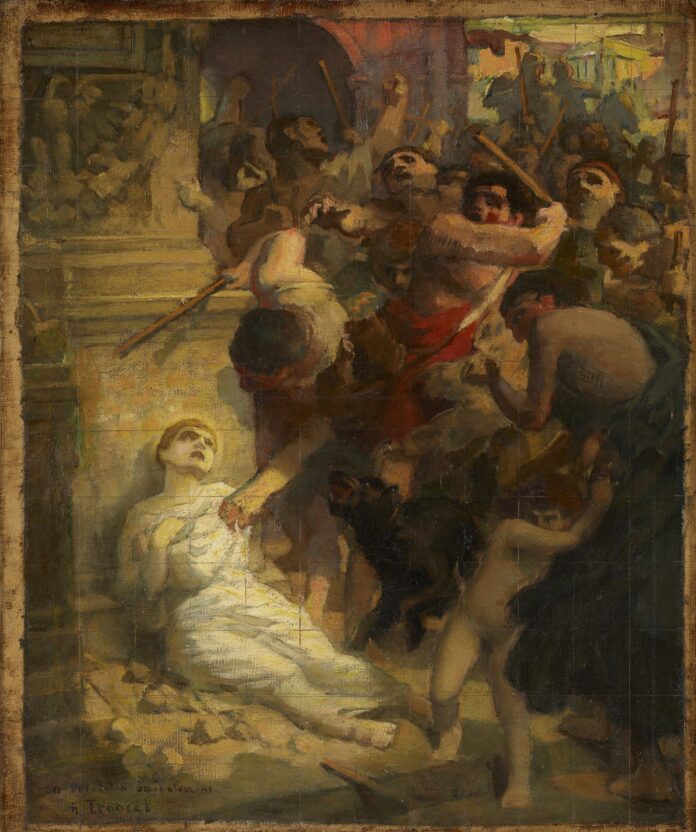In the Roman Martyrology, we hear about the life of a young boy named Tarcisius. He lived in the third century during the persecution of Roman Emperor Valerian. Because of the harshness of the Valerian persecution, Christians were forced to meet in secret locations like private homes or the catacombs if they wanted to worship and celebrate the mass together. Tarcisius would often come to the catacomb of St. Calixtus, and it is very likely that he was an acolyte (a trained altar server).
On one occasion, after celebrating mass, the priest asked if anyone was prepared to bring the Eucharist to other Christian brothers and sisters who were waiting for it. During the Valerian persecution, this was an extremely dangerous undertaking. The young boy Tarcisius stood up and volunteered to go because his youth would be the best shield for the Eucharist. The priest agreed, but reminded Tarcisius that the heavenly bread should not be given to those who do not believe at any cost. He must not give what is holy to the dogs (Matthew 7:6) or swine. Tarcisius understood and replied that he would guard the Eucharist with his life.
On his journey, Tarcisius happened to run into his pagan friends. When he refused to join them, they noticed that he was clutching something under his cloak close to his chest. They tried to pry it away from him but to no avail. Once they realized Tarcisius was Christian, they began to beat, kick, and stone him. Despite all of this, Tarcisius would not be parted from the Eucharist. After a lethal beating, his friends left him dying, still clutching the Eucharist to his chest. A Roman soldier who was secretly a Christian found the dying boy and carried him to the priest. Tarcisius was dead when they arrived at the catacombs, and they buried him right away. Oral tradition tells us that the Eucharist that Tarcisius had guarded with his life actually changed into
his flesh and fused to his body. Thus, Tarcisius became a one flesh sacrifice with Jesus to the Father by laying down his life for the Eucharist.
The martyrdom of Tarcisius is yet another example of the Church’s staunch belief in the Real Presence of Jesus in the Eucharist. Not only did Tarcisius confess with his lips what he held close to his chest was the Body of the Lord, but he laid down his life to protect it. In doing so,he exemplified the words of Jesus: No one has greater love than this, to lay down one’s life for one’s friends. (John 15:13). Tarcisius joined his body to the sacrifice of Christ and received the resurrection of Jesus as one of His martyrs and saints.
Originally published in Prime Soil Magazine | Vol. 1 No. 2
Originally presented at The 10th National Eucharistic Congress in July 2024

